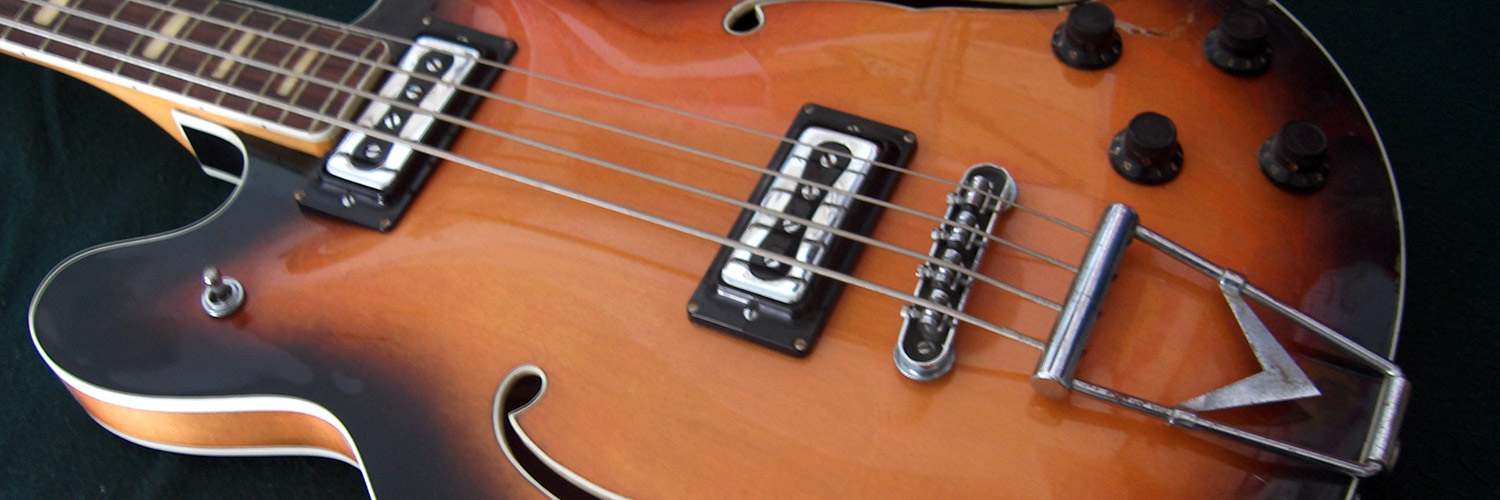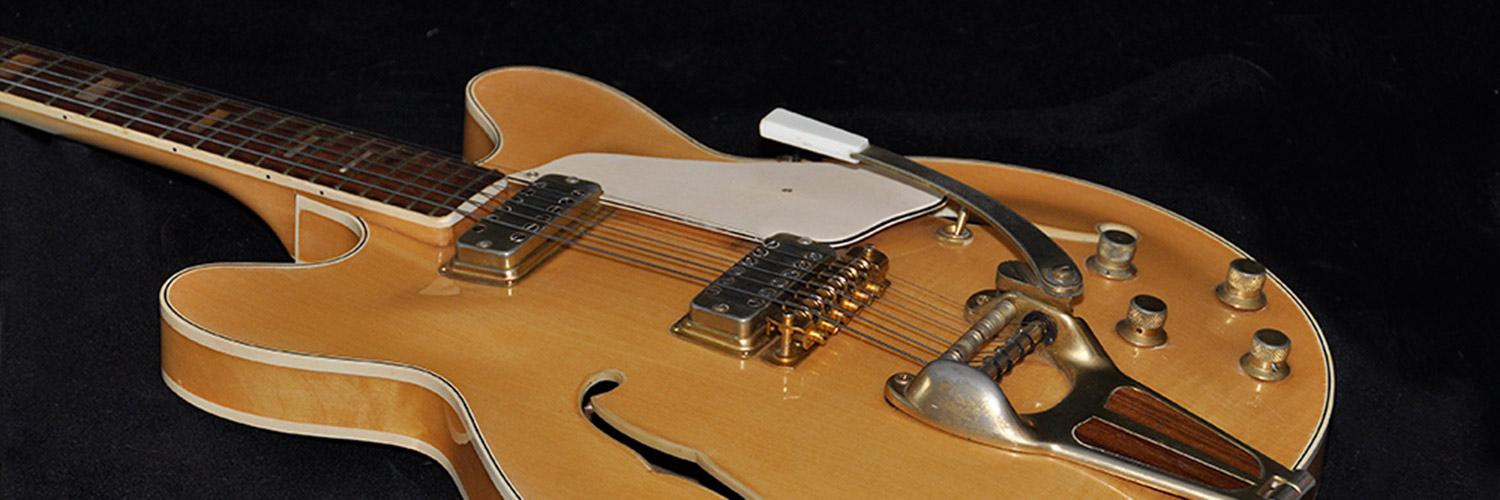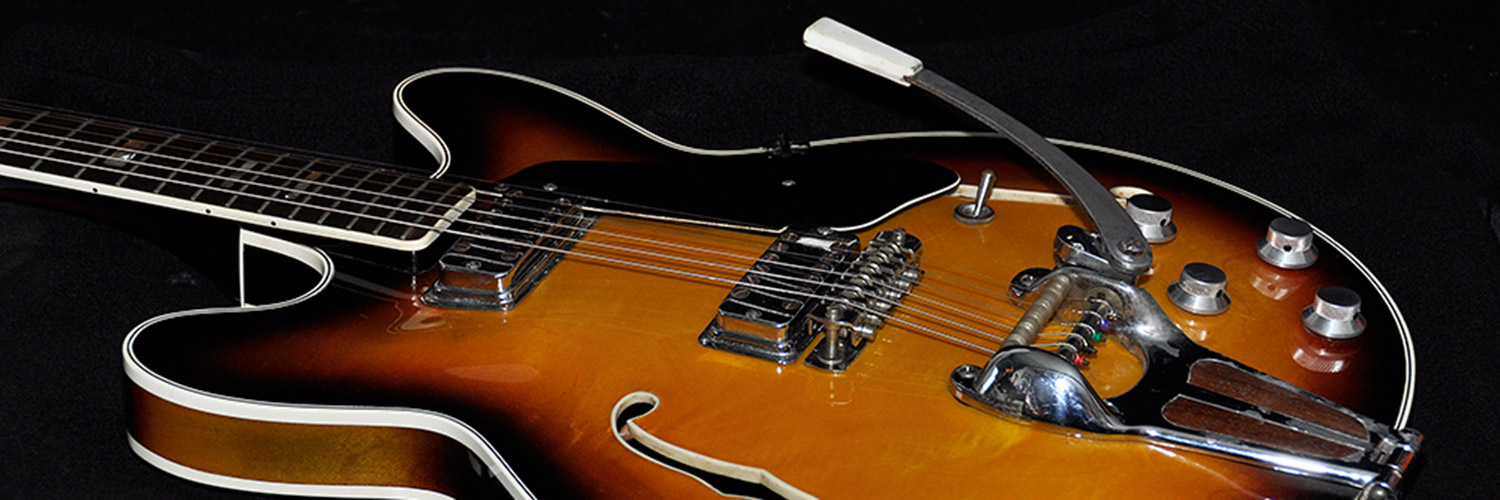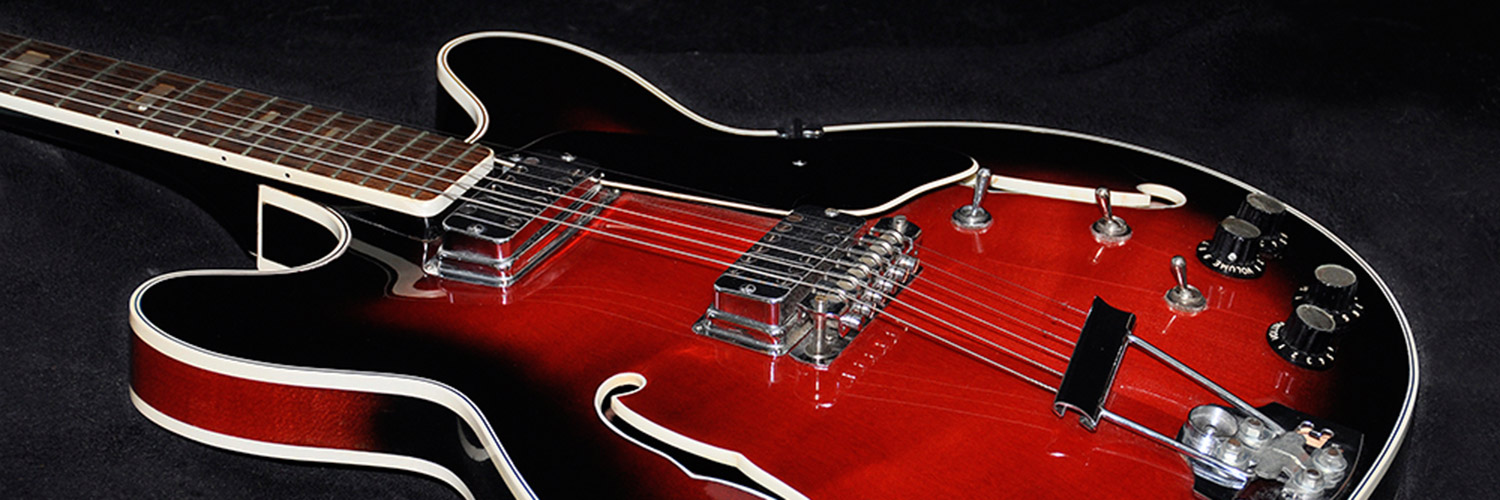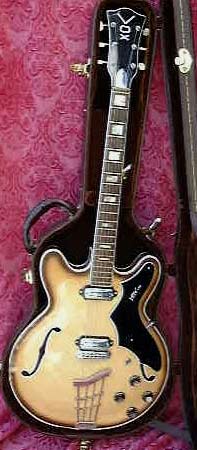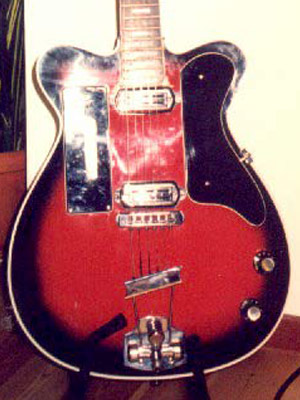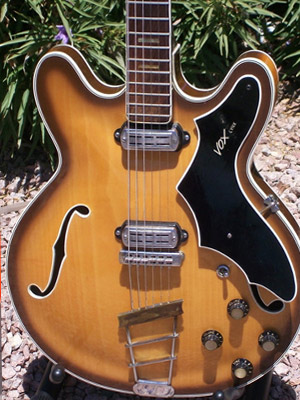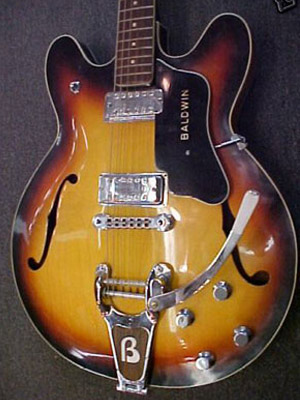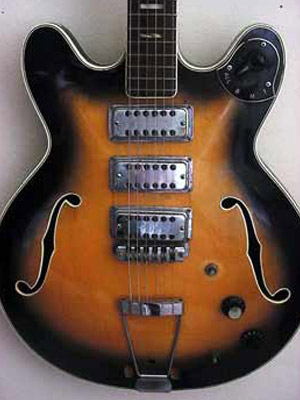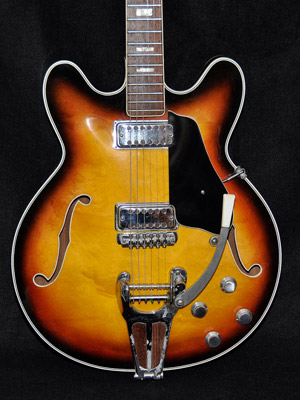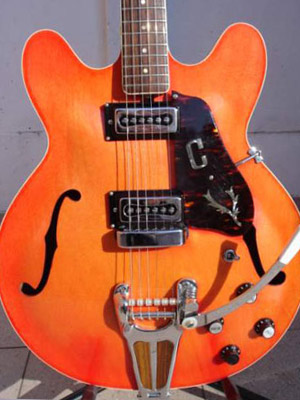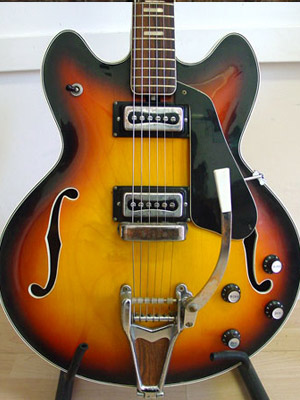Crucianelli 335 style – Chronology
by Jack Marchal
You are looking at one the oldest Vox thinline archtops, a superb Lynx of 1964. The generously rounded body and the narrow headstock profile of this first version denote some influence from Höfner. The German-made wavy tailpiece strengthens the resemblance. The amber sunburst finish that merely shades off to a thin darker outline was a sort of Crucianelli trademark in the mid 60′s.It’s well suited to open this section with a Vox guitar, since Crucianelli started manufacturing ES-335 copies under Vox’s instigation.The Vox amplifiers were already highly successfull in Europe in the early 60s for being associated with the Shadows’ sound. In 1963 the Beatles granted this British brand an instant worlwide fame that soon extended to the so far widely unnoticed Vox guitars. In response to dramatically rising demand the Vox company began in 1964 to order guitar necks from Eko, and soon complete instruments. Those were solidbodies at first, but since the 335 craze was just gathering momentum Vox couldn’t stay aside. A manufacturing agreement was reached with Crucianelli, certainly through Eko. As soon as 1965 ES-335 inspired guitars made by Crucianelli entered the Vox range under the name Lynx, along with the aforementioned Challenger.
State osservando una delle più vecchie archtops di Vox, una bellissima Lynx del 1964. La generosa rotondità della cassa e il profilo della paletta di questa prima versione tradiscono qualche influenza di Höfner. L’attaccacorde ondulato di fabbricazione tedesca accentua la somiglianza. Il sunburst ambra che si riduce a una sottile sfumatura periferica più scura era come un trademark di Crucianelli intorno a 1964-65.
Conviene aprire questa sezione con una Vox, appunto, perché Crucianelli fu indotto a fare delle chitarre nello stile ES-335 su richiesta di Vox.
Gli amplificatori Vox erano già all inizio degli anni 60 apprezzatissimi in Europa come simbolo del sound degli Shadows. Nel 1963 i Beatles diedero alla ditta inglese una gloria mondiale immediata, che presto venne estesa alle chitarre finora ampiamente ignorate. Sommersa dalla domanda, la Vox cominciò nel 1964 ad ordinare delle chitarre alla Eko, prima solo i manici e ben presto strumenti completi. Si trattava inizialmente di solidbodies. Siccome Vox non poteva rimanere tagliata fuori dalla moda delle 335 che allora imperversava, venne concluso un accordo con Crucianelli, certamente attraverso la Eko. Comunque erano già disponibili delle copie 335 di fabbricazione Crucianelli nella gamma Vox del 1965 sotto la denominazione Lynx, al lato delle Challenger già descritte.

